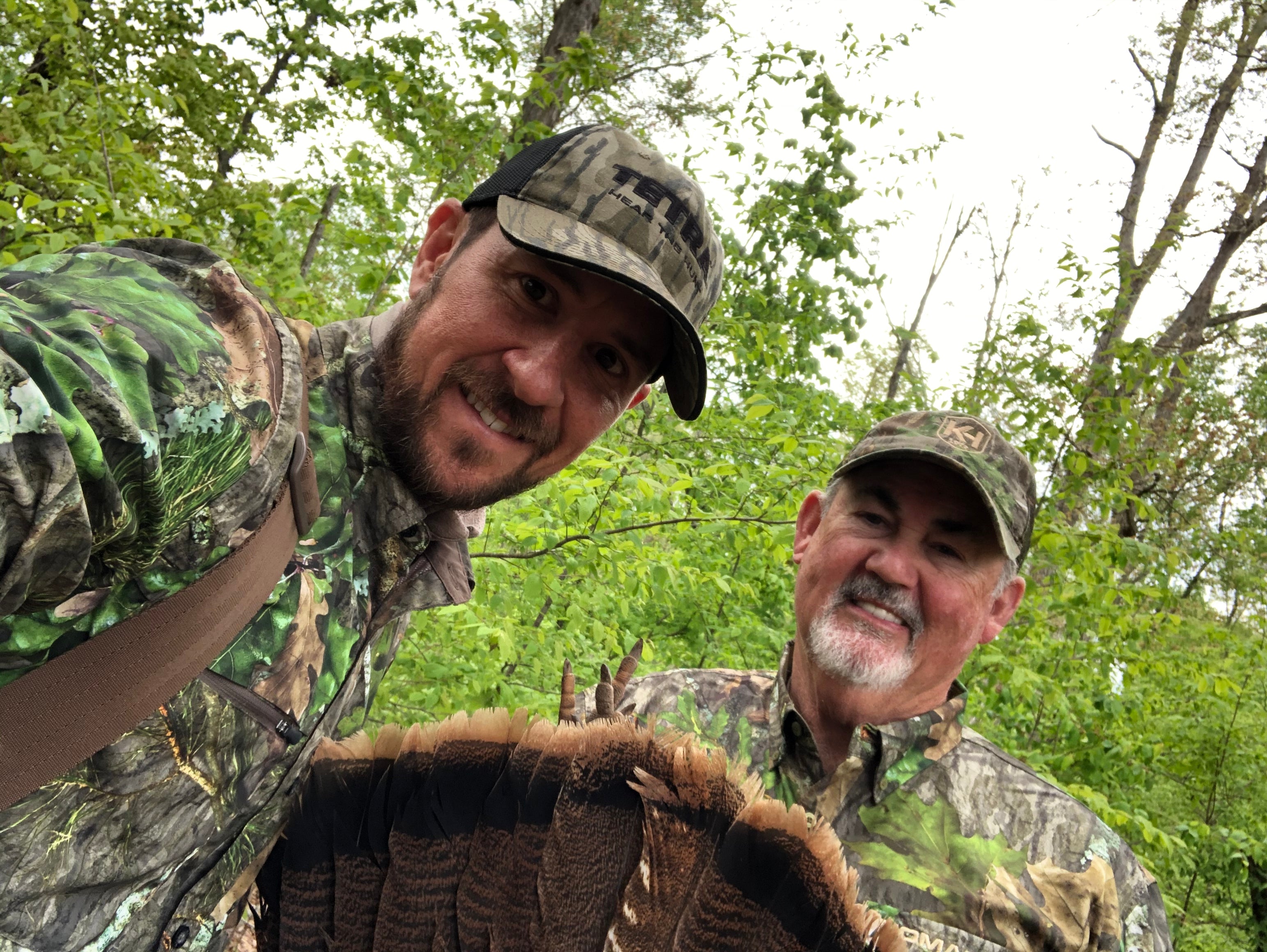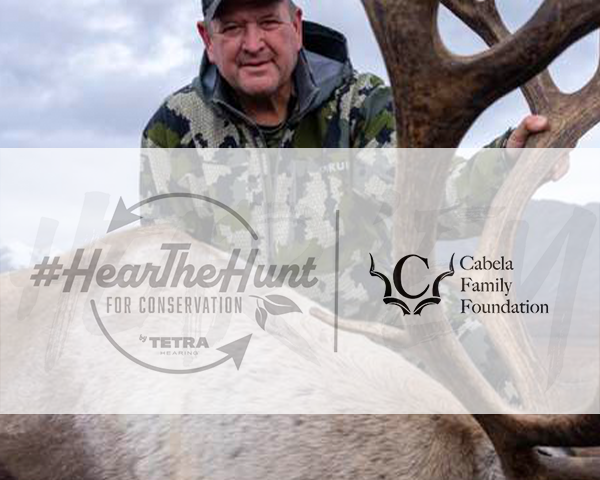An Unforgettable Turkey Hunt with the Legendary Harold Knight

I have called Harold Knight a friend for many years. So when he approached me a couple of years ago saying he needed my help, I was both worried and willing.
"David, I'm struggling to hear turkeys. I miss some gobblers that others hear and can't tell direction anymore. Can you help me?"
This very simple statement was a big part of the "Why?" behind TETRA Hearing™. If a legend like Harold was struggling, could we help him? How many others might be struggling, too?
My partner, Dr. Bill Dickinson, and I began to research, develop, test and retest prototypes that could help Harold and others like him hear and perform better in the woods. Long before TETRA was launched, Harold Knight had some of the first prototypes, and thank goodness – after using them all of last season, he gave us his blessing and highest endorsement. So when I called him a few weeks ago to say I wanted him to try our latest release, the TETRA Multi-Pursuit AmpPods, he invited me to go turkey hunting so we could put them to the test. OK, I mean if you really twist my arm, I'll go!
I met Harold early one morning at a farm on the Tennessee/Kentucky line. I showed him our new AmpPods and he quickly installed them.
"I mean, I can really, really hear with these," he exclaimed. "David, every sound of the woods is coming in clear." I couldn't wait to see what happened when the turkeys started gobbling. "David, y'all are doing the right thing. You have to always be improving, always working on something better. I liked my old ones, but these are much better. Now I've got programs for Turkey, Deer and Elk!"
Proverbs 17:28 says, "Even a fool is thought wise if he keeps silent." So, I spent the early morning hours listening and watching the legend work, just soaking it all in. We started out in a blind on an oak flat on the edge of a field. A pre-dawn owl call went unanswered, but around 6:10 a.m., we heard our first bird. Harold looked at me, "Where did you think that one was?" I pointed front left. He pointed front right. We heard him again about three minutes later. I still thought front left. He still thought front right. Sure enough, five minutes later the longbeard appeared in front of us coming from the right, exactly where Harold said he was. That bird was on an unresponsive mission. "He knows where he's going," Harold explained. "He answered my call, but didn't give us a second thought." We watched as he made a steady beeline for some important destination. Over the next couple of hours, we were surrounded by hens scratching in the leaves, but no more gobblers.
Every sound in the woods means something to Harold Knight. A crow changed the intensity of call while soaring over some pines. "He probably saw a turkey." Woodpeckers, blue jays, hen turkeys, doves, wind – he is so keenly aware of everything in his environment. I thought to myself, "This man has made his living with sound. I've made mine helping people hear sounds. He's made his helping people create better animal sounds." Sound is his life!
"We'll give this spot til about 8 a.m. and then we will have some fun," he explained. "I'd much rather run and gun than sit here and wait." So around eight, we started moving around the farm, calling and listening.

Harold Knight is 76 years old, but he moves and hunts like a young man. We'd ride a few hundred yards in the ATV and he'd jump out, position himself perfectly and, of course, make a perfect call. His bright eyes were constantly scanning the horizon. "Did you see that rabbit?" he asked. Of course I had to really look to see what he saw. "Look at these gobbler tracks." I'm scanning the mud to try to find what was just instinctual to Harold.
"There's too much wind for them to be in these types of places," he explained. "We have to find somewhere where we can hear them and they can hear us. You see, David, to be a good turkey hunter, you have to learn how to hunt on clear days, rainy days, cold days, windy days. Turkeys act different based on the conditions. You have to learn that." I just nodded, smiled and thought about how many turkey hunters would love to be sitting where I was at that moment.
Our next move was the right one. We got on the edge of a ridge that blocked the wind and Harold called down into a big hollow. I heard what I thought was a faint response. Harold immediately pointed. He called again. Again, a faint response. "Let's reposition so we can pinpoint exactly where he is." We moved about 50 yards. Harold called again. The bird responded again. He looked at me and smiled and said, "Let's go kill that bird."
Harold took off in front of me around a thicket and skirted the edge of field, staying in the shadows. I'm thinking, "We have gone too far. I'm not sure he was this direction." When I finally caught up and Harold got exactly where he wanted to be, he called and got an immediate shock gobble from about 100 yards away – again, exactly where Harold thought he was.
We set up quickly, but the bird wouldn't respond anymore. "He's with hens," Harold said. "That's why he won't respond any more." Several minutes of sitting, listening, and quiet calling and no more gobbles. Then it started to happen. Harold wailed on a crow call and got an immediate answer about 100 yards from where we heard the first gobble. "He moved," I said. "No, that's a different turkey," Harold responded. Harold then yelped on his friction call and the gobbler barked back. We got into position and the next few minutes were simply unbelievable. Harold would yelp and purr, the gobbler would fire back, drawing closer. Soon the first bird we heard started gobbling behind us. We have one coming from the front, one from behind, both closing in fast. I didn't even know which way to look.
Harold continued his aggressive calling, and more gobblers started responding. At one point there were four different longbeards responding to his call. Then I heard that sound that every turkey hunter loves: The bass drumming of a gobbler in strut. I heard it for about 45 seconds before I barely saw the tip of his fan and top of his blue head. The big bird made about three more steps, stuck his head up and Harold's 20 gauge barked. I started to get up and celebrate, but Harold gave me the "be still" sign. "Watch this," he said. He hit the call again and three more gobblers responded in unison. He purred, they gobbled. He played with them for a few more minutes and looked at me and said, "OK, that's enough. One turkey is enough for today."

As I type, I can replay every moment in my head. Like watching an artist or an athlete, I was watching a master at his craft. At 76 years old, this man moves, sees, thinks, and now hears like a 30 year old. I'm so glad he came to me a few years ago with that simple request to help him hear turkeys better. I can't tell you how much it means to have been a part of that, at that we at TETRA could help keep this legend – and a lot of other hunters – at the top of their games.

0 comments


